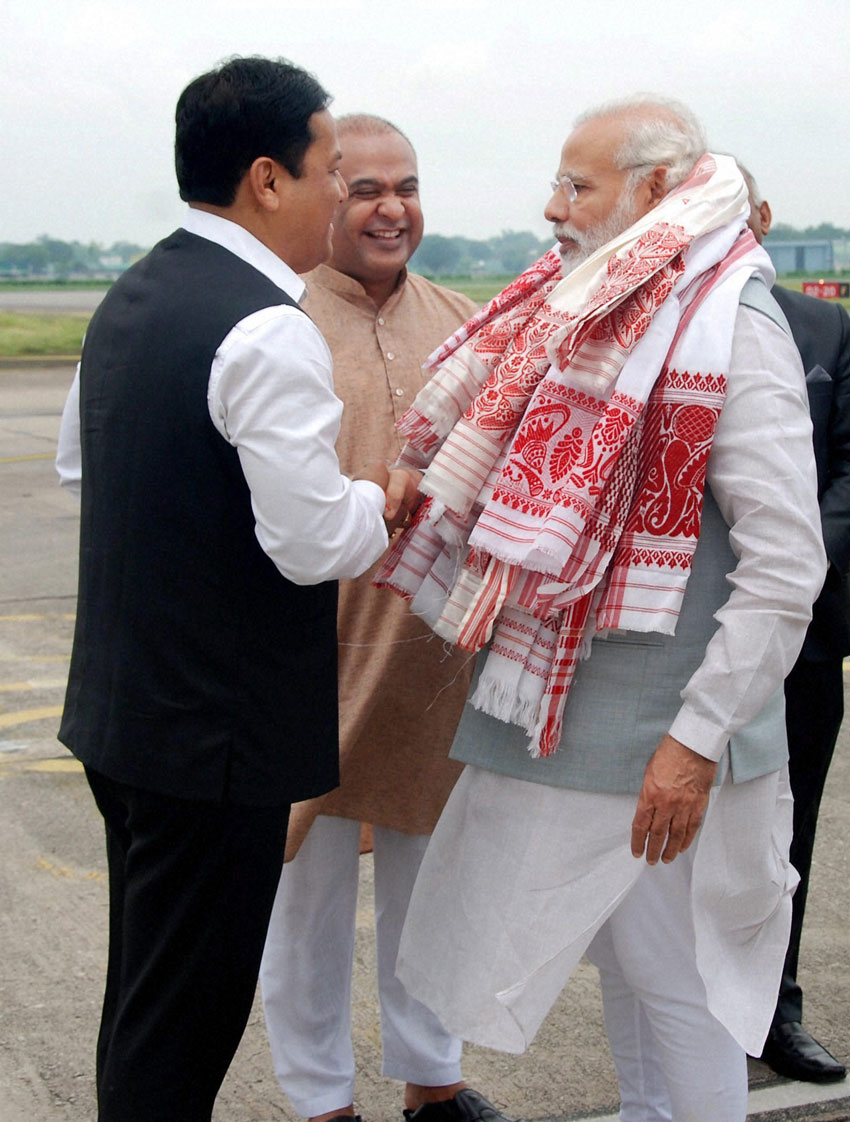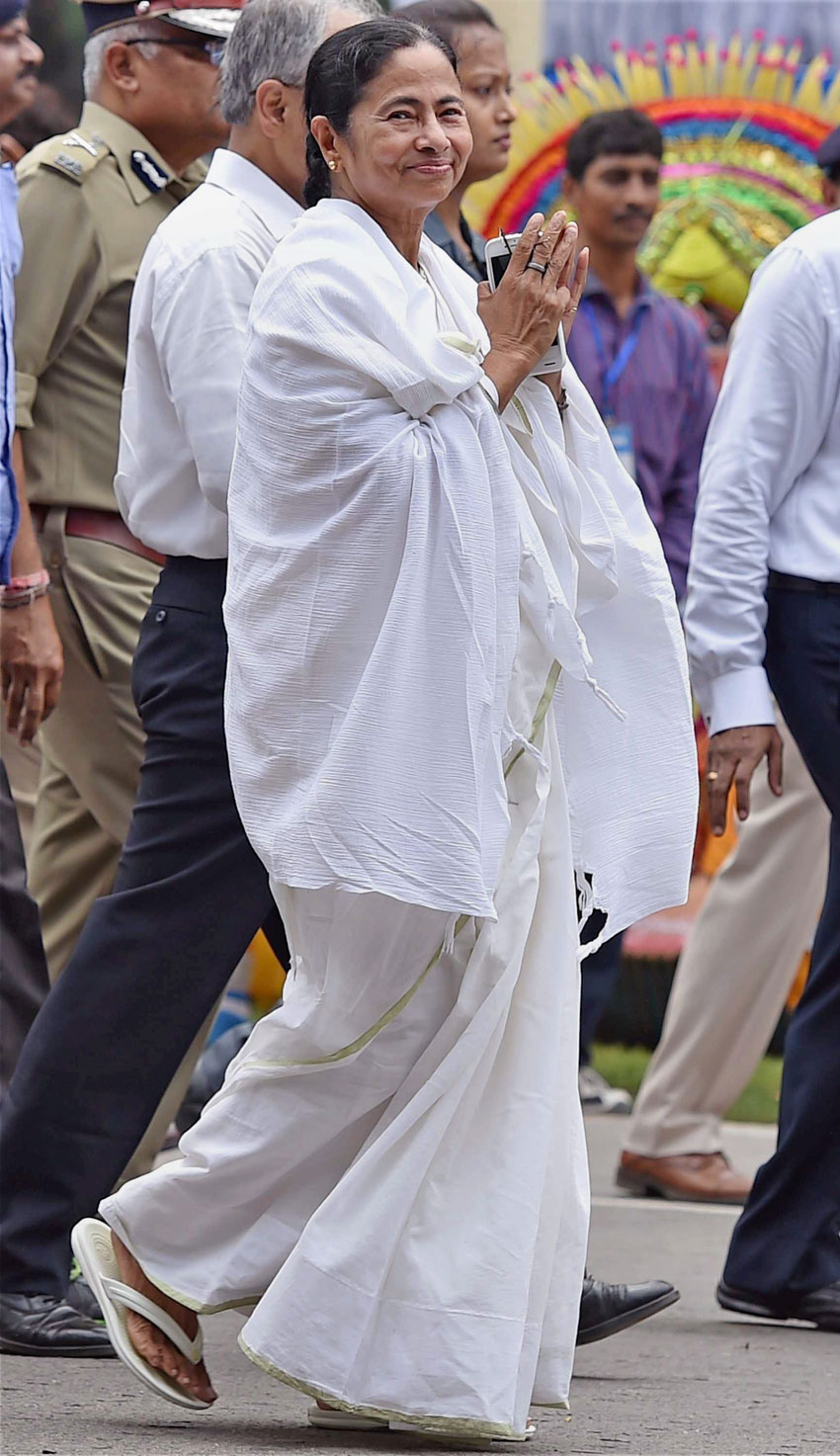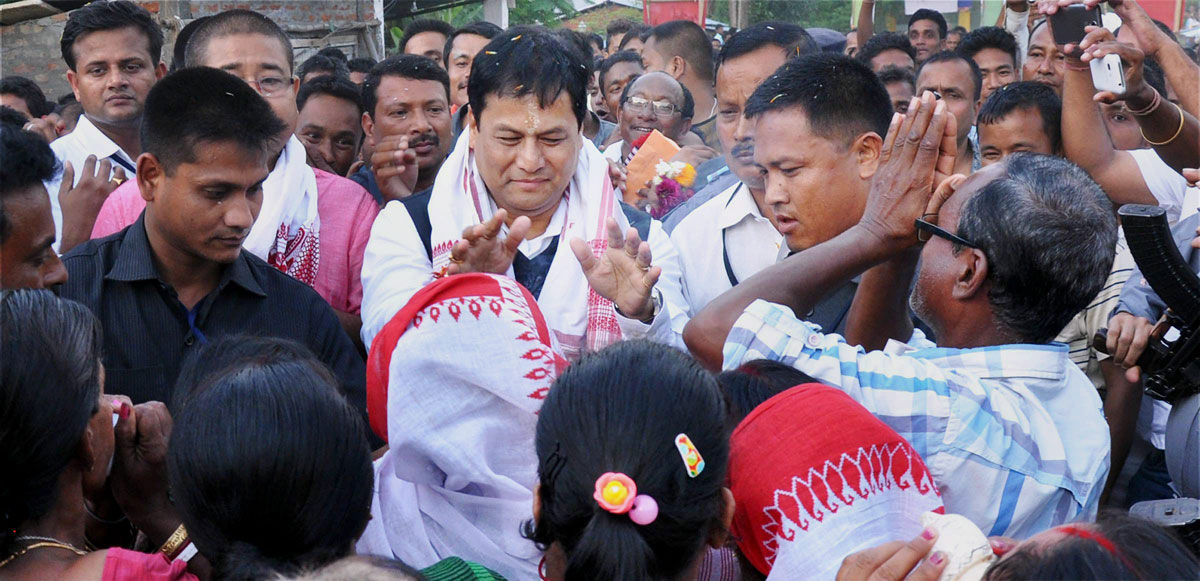INDIA TURNS A SHADE MORE SAFFRON
Newly-elected Assam Chief Minister Sarbananda Sonowal of the BJP being felicitated at his native place Molokgaon in Dibrugarh district of Assam, May 30. (Press Trust of India)
The verdict of the recent assembly elections is out and one can safely say that India has turned a shade more saffron. Since May 26, 2014 when the Narendra Modi-led Bharatiya Janata Party (BJP) was installed at the center, the party has come to dominate in nine states and share power in four more, writes Priyanka Bhardwaj. (@siliconeer, #siliconeer, #india, #indiaelections, #namo, #BJP, #turningsaffron)
After having won in Assam legislative polls and gaining approximately 10% of votes in West Bengal and Kerala, the political footprint of the BJP has enlarged to over 35% of the country’s population.
In other words its influence is no more relegated to the Hindi speaking states, better known as the cow-belt hinterland, but can be seen spreading rapidly on a pan-India scale.
On the other hand its principal adversary, the Congress having been ousted from most of its erstwhile bastions, has reduced to just about 6 states.
A party that dominated national politics till 1980s now has to contend with governing only 7% of the population.
Assam was a crucible of sorts for the BJP where its strategy of announcing its Chief Ministerial candidate much before elections yielded it a huge dividend.
Despite 34% of the Muslim demography, the BJP-led alliance captured 86 of the 126 constituencies.

As the Congress and the Badruddin Ajmal-led All India United Democratic Front faltered to stitch a deal the phenomena of “Hindu-consolidation” and splitting of Muslim votes brightened BJP’s prospects.
If this be the trend then the Samajwadi Party that draws its sustenance from the Muslim vote bank in Uttar Pradesh (U.P.) may have an important lesson to learn.
With the U.P. elections slated for 2017 and no foreseen reversal of fortunes for the Congress, it is not too long when U.P. could be a potential feather in BJP’s already feathery cap.
Much as there may be to be rejoice for the BJP there were other winners in other states and regions.
In West Bengal, Mamata Banerjee of Trinamool Congress emerged as the reigning queen, aptly ducking the anti-incumbency factor by all means at her disposal and washing off the taint of the Saradha scam.
The grand old party improved struck 44 seats while the BJP’s tally was a mere 3.
Similarly, vanquishing the anti-incumbency wave in Tamil Nadu was J. Jayalalithaa of AIADMK who reaffirmed her poll sway with 134 of the 232 seats.
While the voters dismissed any newbie or frivolous player, the AIADMK out-maneuvered the DMK, BJP and Pattali Makal Katchi at the very onset with its big ticket freebie basket in complete accordance with the freebie culture that has become a pre-poll mainstay since ideology based politics went out of vogue in the state.
The DMK-freebies—free Internet for students and free smartphones for poor farmers – were a poor match to Amma’s (read Jayalalithaa) lure of more free gold for women under the Thaalikku Thangam (Gold for Mangalsutras) scheme, 50% discount on scooters for working women, free mobile phones for ration card holders, 100 units of free power a month and free Internet for students.

Another remarkable feature of the results was the rise of the old brigade as evident in Kerala where the Left Democratic Front led by 93-year-old Achutanandan marched on to bag 91 out of the 140 member assembly seats.
If the Congress-led UDF managed a second position with 47 seats, the BJP ate the humble pie with a solitary score.
While it was raining bad news for the Congress on account of desertion by some high profile leaders, its combine with DMK in Puducherry did conquer 17 of the 30 seats on the basis of a strong anti-incumbency atmosphere.
Apart from this tiny place the only other solace, however uncertain, for the Congress has been the installation of the Harish Rawat-led government in Uttarakhand, which in fact was made possible only due to timely interventions of the courts.
Notwithstanding that fact that the Congress took 115 seats in total as compared to the BJP’s overall tally of 64 in these polls, it is clear that Rahul Gandhi’s leadership skill has not brought any value to the Congress’s chances.
Maybe an injection of some fresh thinking for revamping slogans, ideas, coalition and communication could resurrect the party that is hell bent upon fancying the Gandhi scion as the primus inter pares amongst the chief challengers of Modi despite a continued dismal performance.
On the other hand the BJP has its own lessons to learn and focus on its delivery of good governance and performance if targets to keep the public in its favor in order to achieve a “Congress-mukt (free) Bharat.”


